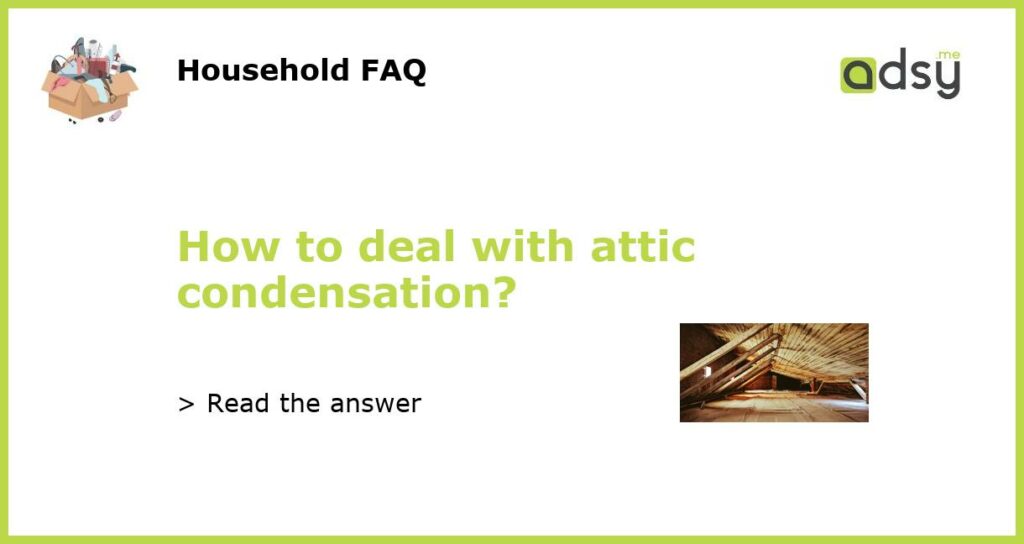Identifying the Causes of Attic Condensation
Attic condensation can be a frustrating problem, as it can lead to mold growth, water damage, and deterioration of insulation. To effectively deal with attic condensation, it is important to first understand the causes. There are several factors that can contribute to attic condensation, including:
- Poor ventilation
- Inadequate insulation
- Excessive humidity in the home
- Infiltration of outside air
Improving Attic Ventilation
Poor ventilation is a common cause of attic condensation. Inadequate airflow can lead to a buildup of moisture in the attic, which can then condense on the cooler surfaces, such as the roof and insulation. To improve attic ventilation, consider the following:
- Install attic vents: Adding vents to the roof or soffits can promote airflow and help prevent condensation.
- Use exhaust fans: In bathrooms and kitchens, use exhaust fans to remove moisture from the air and vent it directly outside.
- Clear obstructions: Ensure that vents and ducts are not blocked by insulation or debris.
Addressing Insulation Issues
Inadequate insulation can also contribute to attic condensation. When warm, moist air from the home rises into the attic and comes into contact with cooler surfaces, such as the roof, it can condense into water droplets. To address insulation issues, consider the following:
- Add insulation: Increase the amount of insulation in the attic to create a barrier between the warm air in the home and the cooler surfaces of the attic.
- Seal air leaks: Identify and seal any gaps or cracks in the attic that may be allowing warm, moist air to enter.
- Install vapor barriers: In some cases, installing a vapor barrier between the insulation and the living space can help prevent moisture from reaching the attic.
Reducing Humidity in the Home
Excessive humidity in the home can contribute to attic condensation. When the air inside the home is too humid, it can carry more moisture into the attic, increasing the likelihood of condensation. To reduce humidity, consider the following:
- Use dehumidifiers: Install and use dehumidifiers in areas of the home that tend to have higher humidity levels.
- Ventilate properly: Ensure that areas like bathrooms, kitchens, and laundry rooms are properly ventilated to remove excess moisture from the air.
- Fix plumbing leaks: Address any plumbing leaks promptly, as they can contribute to high humidity levels in the home.
Preventing Infiltration of Outside Air
Infiltration of outside air into the attic can also contribute to condensation issues. When warm, moist air from the exterior enters the attic, it can come into contact with cooler surfaces and condense. To prevent infiltration of outside air, consider the following:
- Seal gaps and cracks: Identify and seal any gaps or cracks in the attic that may be allowing outside air to enter.
- Insulate attic access points: Ensure that access points, such as hatches or doors, are properly insulated to prevent air leakage.
- Install weatherstripping: Add weatherstripping around doors and windows in the attic to create a seal and prevent air leakage.

